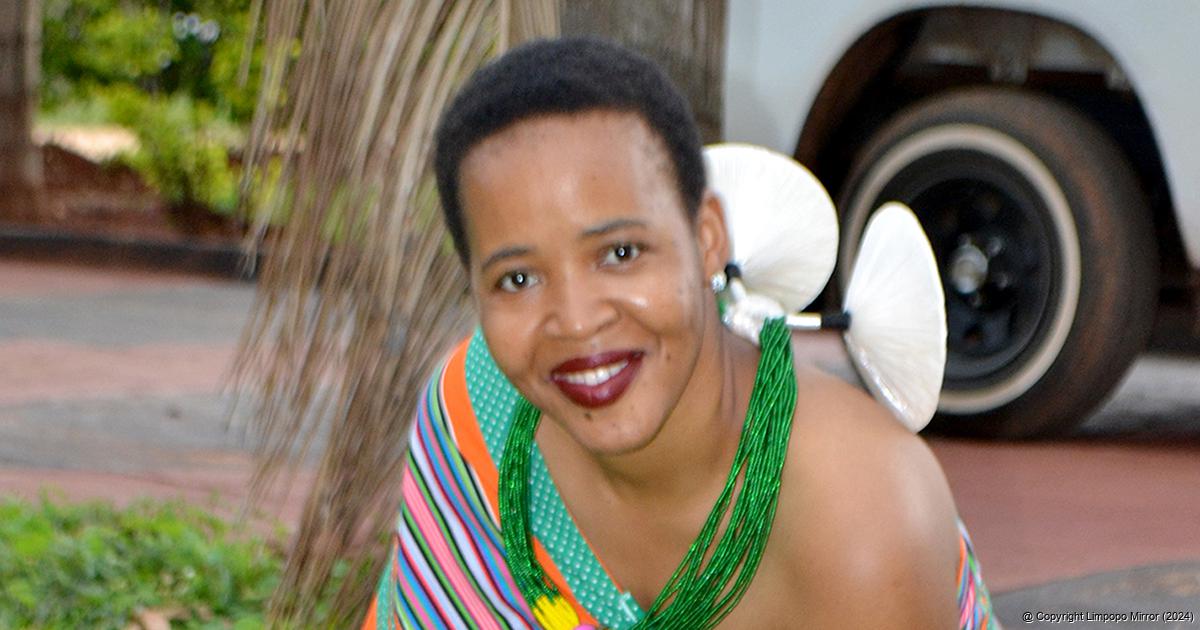

ADVERTISEMENT:

The brain behind the Khari tshine Ma Africa dance project, Ms Lindelani Sharon Livhebe, photographed wearing a minwenda and doing U losha, preserving the Vhavenda culture. Photo: Silas Nduvheni.
Khari tshine Ma Africa Dance promotes cultural dances
A Limpopo-based woman, Ms Lindelani Sharon Livhebe, has started a cultural dance project, called Khari tshine Ma Africa Dance, meaning “let’s dance the African dances” in English. She is urging all South Africans to come and perform their dances in an effort to exhibit these cultural dances while also sharing vital educational lessons.
Livhebe (36) was born and raised in the Ravele royal family in Sibasa, where she embraced the Vhavenda culture and learnt how to be responsible at a very early age.
She said that, in 2018, she came up with the idea of starting a film and production company, called Village Rose. Her husband, Mr Hulisani Livhebe, who is also an experienced documentary filmmaker, assisted her in this endeavour and guided her into the amazing world of storytelling through the lens of a camera.
According to Livhebe, her latest project entails promoting cultural dances such as tshigombela, malende, xibelane, tshikona and tshifasi. “We have to teach our young kids to take part in different cultural dances and preserve the culture, so that future generations will also know how things were done in the past,” she said.
Livhebe said that the dance project went from strength to strength, and they were commissioned by SABC2 television to record a 13-episode documentary series. The series started airing on SABC2 on 5 October this year and is aired every Tuesday night at 20:30.
“The series is aimed at challenging and questioning contemporary lifestyles by contrasting them with those of our forebears,” she said. She mentions an example of the fight against HIV/Aids that has ravaged society. This is put in contrast with illnesses from the past that our ancestors had to battle.
“Our intention with Khari tshine Ma Africa Dance is to take the viewer not only on a journey to explore the positive evolution and development of these cultural dances, but that of tolerance and dispelling the myth of entitlement,” she said. She mentions the example of a girl wearing a shedo (the traditional attire that only covers the private area) of girls performing the Domba dance.
Date:15 January 2022
By: Silas Nduvheni
Read: 1111

ADVERTISEMENT

ADVERTISEMENT:

ADVERTISEMENT:

Recent Articles
-

Sport League Logs for 19 April 2024
22 April 2024 -

From sportscaster to advocate
21 April 2024 By Silas Nduvheni -

Magau's music prophecy gets real
21 April 2024 By Elmon Tshikhudo -

Granny Khorommbi keeps on going
21 April 2024 By Silas Nduvheni -

New lab welcomed by Bungeni learners
20 April 2024 By Thembi Siaga

ADVERTISEMENT

Popular Articles
-

Leopards’ top striker dreams of playing for Kaizer Chiefs
22 March 2024 By Frank Mavhungu -

Lesley Manyathela stadium remains a 'white elephant' to local clubs
23 March 2024 By Kaizer Nengovhela -

Well-known inventor, Prof Mulalo Doyoyo, dies
14 March 2024 By Victor Mukwevho -

Prophet Muritho's nightmare continues
19 April 2024 By Elmon Tshikhudo -

Masindi case likely to introduce new era of customary law
24 February 2024 By Anton van Zyl -

Park development leaves residents puzzled
22 March 2024 By Andries van Zyl -

Many questions as man shoot himself in the head
15 March 2024 By Elmon Tshikhudo

